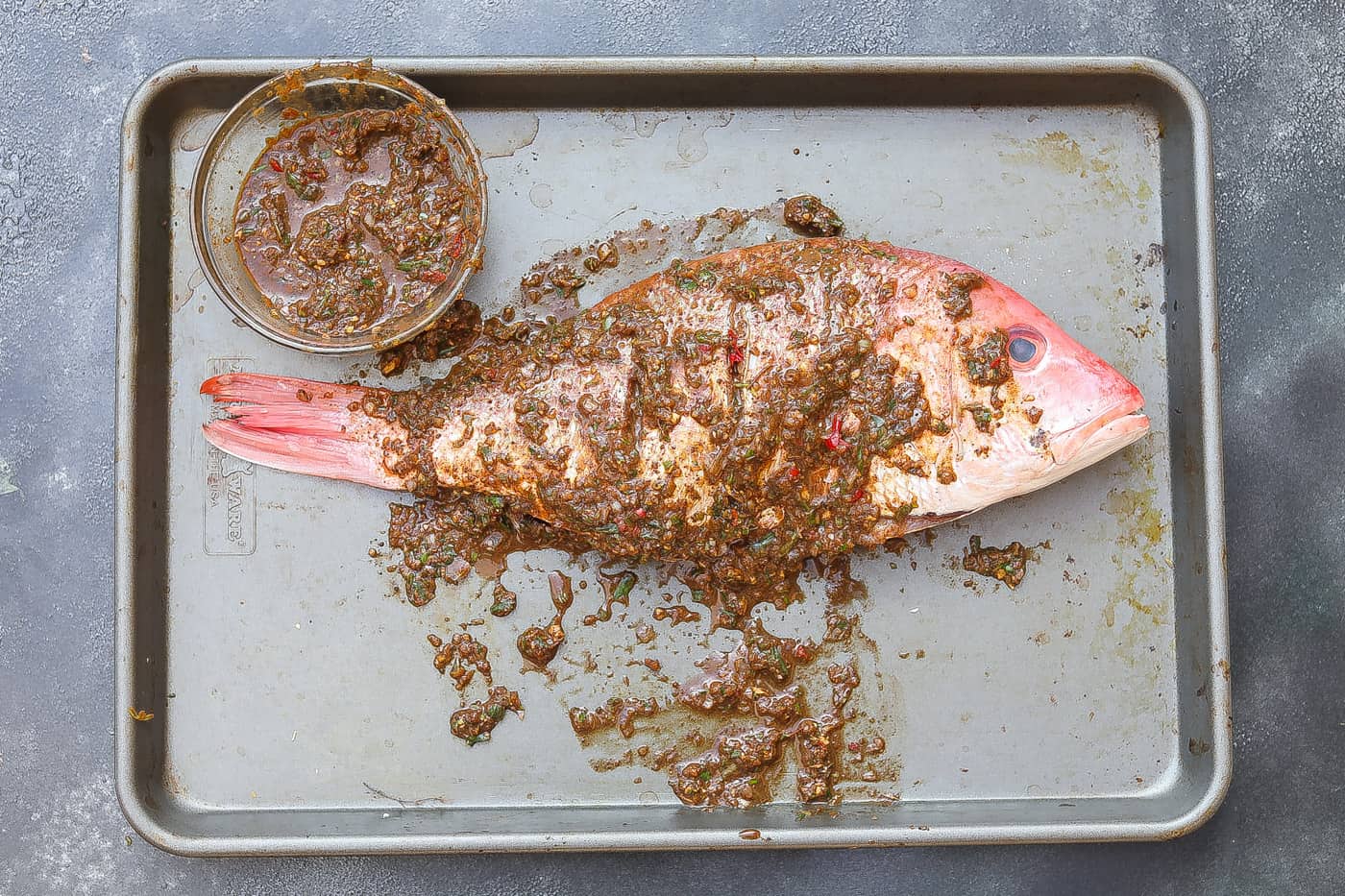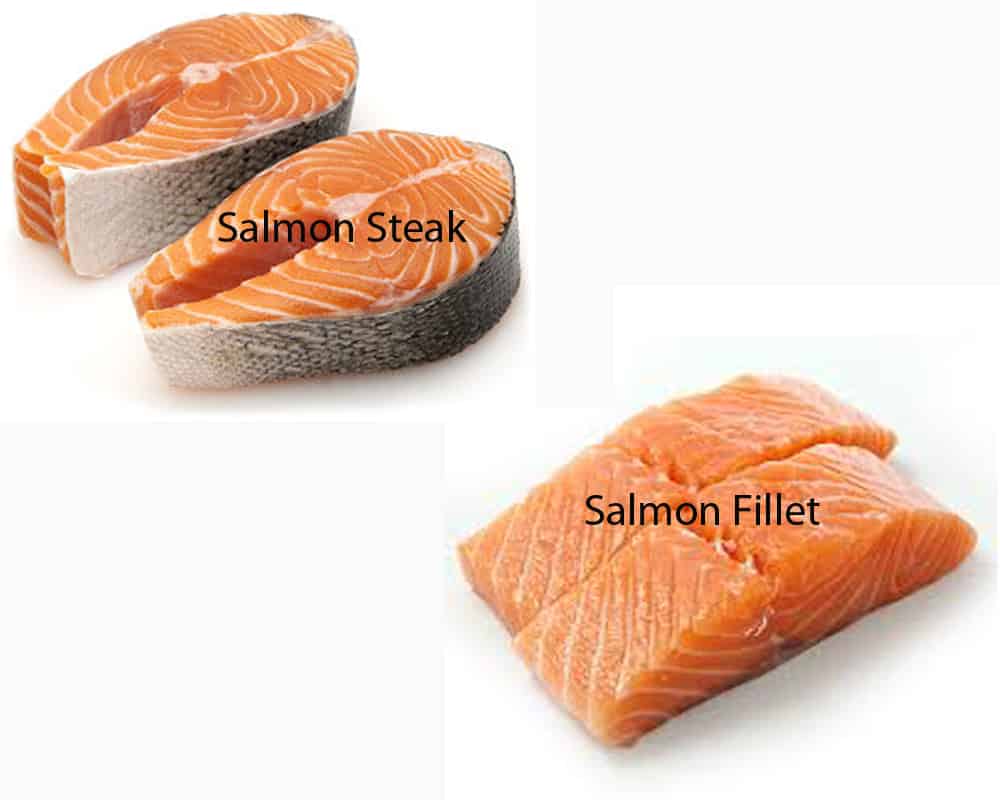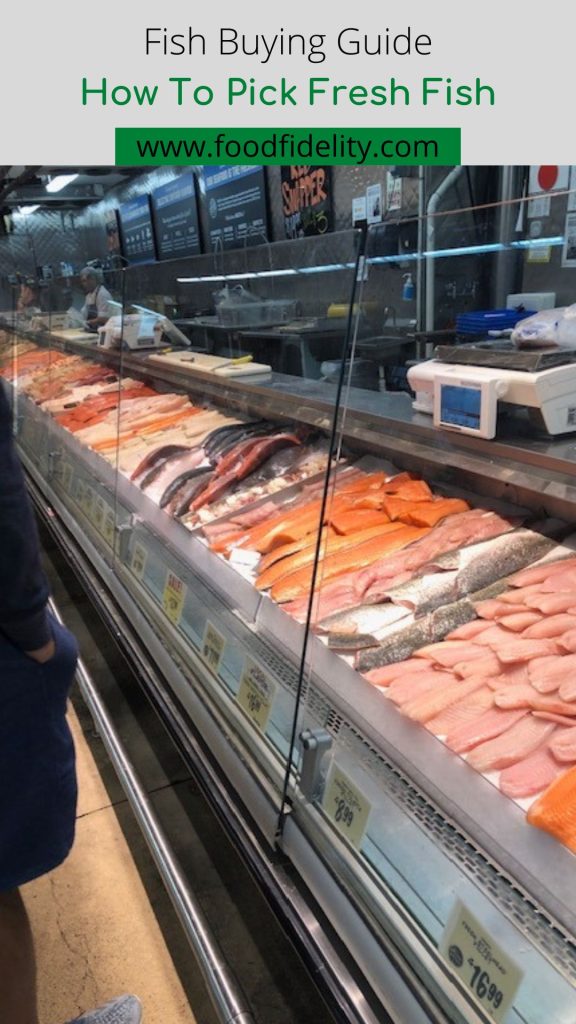Related Posts:
When it comes to fresh fish, there's no compromise. Finding the freshest seafood around and knowing how to prepare it so that it still tastes delicious is key to a successful and enjoyable dining experience.
With this comprehensive guide for how to pick fresh fish, you'll find out how to buy fish at its freshest. There is no reason why home cooks shouldn't have access to fresh fish like restaurants.

How To Pick Fresh Fish
Choosing fresh fish isn't easy. When buying fish, there are a few things you can look for to ensure that you are getting the freshest fish possible:
1. Look for clear, shiny eyes on whole fish:
The eyes of a fresh should be clear and shiny, not cloudy or dull. Cloudy eyes or sunken eyes are a sign that the fish is old or has been mishandled.
2. Check the gills:
The gills of a fresh fish should be bright red or pink, not brown or gray. The gills are where the fish takes in oxygen, so if they are discolored, it could be a sign that the fish has been out of the water for too long.
3. Smell the fish:
Good fish should smell like the ocean, not like fish. Check for a sour smell. If the fish has a strong, unpleasant odor, it is not fresh.
4. Look at the skin:
Fresh fish should have firm flesh and be elastic. Avoid fish that is soft or mushy. If you press on the flesh and it stays indented, the fish is not fresh.
5. Pay attention to the fish's gills:
If you are buying a whole fish, check the gills. They should be bright red or pink, indicating that the fish is fresh.
6. Check the date:
If the fish is sold pre-packaged, check the sell-by date to ensure that it is still fresh. You don't want to buy old fish.
7. Check the ice:
The color of the ice in the display will tell you a lot. If it is discolored then it not likely fresh.
8. Buy from a reputable seller:
If possible, buy your fish from a reputable seller who you trust. Start with a good fresh fish market if available to you. They are more likely to handle and store the fish properly, which will ensure its freshness. You can develop a relationship with the fish guy at your local grocery store. At minimum, you should learn the weekly delivery day.
Rotting fish starts as soon as surrounding temperature drops. Preserve as much freshness as possible by requesting ice for the transport home.
Should I Buy Whole Fish or Fresh Fillets?
Whether it's better to buy a whole fish or fillets depends on several factors, including personal preference, cooking method, and availability. Here are some pros and cons of buying whole fish versus fillets:
Whole Fish:
Pros:
- Fresher: Whole fish is often fresher than fillets, as the skin and scales protect the flesh from exposure to air and bacteria.
Cons:
- More difficult to prepare: Preparing a whole fish can be more challenging than preparing fillets, as it requires cleaning, gutting, and scaling the fish.
- More bones: Whole fish typically have more bones than fillets, which can be a challenge for some people to eat.

Fish Fillets:
Pros:
- Easier to prepare: Fillets are often easier to prepare than whole fish, as they require less cleaning and preparation.
- No bones: Fillets are boneless, making them easier to eat and less of a choking hazard.
- More consistent: Fillets are usually more consistent in size and shape, making them easier to cook evenly.
Cons:
- More expensive: Fillets are often more expensive than whole fish, as there is more waste involved in processing the fish.

What is the best day or time to buy fresh fish?
The best day to buy fresh fish depends on several factors, including where you live, the type of fish you want, and when the fish was caught. However, in general, the best day to buy fresh fish is often early in the morning, especially if you are purchasing from a local fish market or fishmonger.
Many fish markets receive deliveries of fresh fish early in the morning, so you are more likely to find a wider selection of fresh fish during this time.
It's also worth considering the day of the week when purchasing fish. Some markets have specific days when they receive fresh deliveries, so it's a good idea to ask your fishmonger when they typically receive their shipments.
Where do you buy the freshest fish?
The freshest fish can be found at various locations, depending on where you live and what options are available. Here are a few places where you can typically find fresh fish:
- Local fish markets: These are often the best places to find fresh fish, as they specialize in selling seafood and receive regular deliveries of fresh catches.
- Fishmongers: These are shops that specialize in selling fish and seafood. They often have a good selection of fresh fish, and can provide advice on how to prepare and cook different types of fish.
- Supermarkets with a seafood section: Many large supermarkets have a seafood section, where you can find a selection of fresh fish that is typically delivered several times a week.
- Online seafood retailers: There are many online retailers that specialize in selling fresh fish and seafood, and can deliver it directly to your door.
No matter where you buy your fish, it's important to look for signs of freshness, such as clear eyes, shiny skin, and a fresh ocean smell. It's also a good idea to ask your fishmonger or retailer about the origin of the fish and when it was caught.
What is the best place to order fish online?
There are several reputable online seafood retailers that offer a wide variety of fresh fish, and the best place to order fish online may depend on your location, budget, and specific preferences. Here are some popular online seafood retailers to consider:
- Fulton Fish Market: This online retailer offers a wide selection of fresh fish, including wild-caught and sustainably farmed options. They offer next-day delivery in many locations across the United States.
- Vital Choice: This online retailer specializes in sustainably sourced seafood, including wild-caught fish and shellfish. They also offer organic and grass-fed meats, and have a variety of options for those with dietary restrictions.
- Sea to Table: This online retailer sources fish directly from small-scale fishermen and fisheries across the United States. They offer a variety of wild-caught fish and shellfish, and prioritize sustainability and traceability in their sourcing.
- Wild Alaskan Company: This online retailer offers a variety of wild-caught Alaskan seafood, including salmon, halibut, and cod. They prioritize sustainable fishing practices and offer monthly subscription options.
- Catalina Offshore Products: This online retailer offers a variety of fresh and frozen seafood, including sushi-grade fish and shellfish. They also have a wholesale division and supply many restaurants and sushi bars.
How do you store fish?
Storing fish properly is important to maintain its quality and prevent spoilage. Here are some tips for storing fish:
- Refrigerate immediately: As soon as you bring fish home, refrigerate it immediately. If the fish has been previously frozen, it can be stored in the freezer until ready to use.
- Store in the coldest part of the fridge: Store fish in the coldest part of the refrigerator, which is usually the bottom shelf. Keep it in its original packaging or wrap it tightly in plastic wrap or aluminum foil to prevent it from drying out.
- Use within a few days: Fresh fish should be consumed within a few days of purchase. If it is not going to be used within this time, it should be frozen.
- Freeze for long-term storage: Fish can be frozen for long-term storage. Wrap it tightly in plastic wrap or aluminum foil, and place it in a freezer-safe container or freezer bag. Be sure to label the container with the type of fish and the date it was frozen.
- Thaw properly: When ready to use frozen fish, thaw it properly. The best way to do this is to place it in the refrigerator overnight. Alternatively, it can be thawed in cold water, or using the defrost setting on a microwave.
- Avoid cross-contamination: To prevent cross-contamination, store fish separately from other foods in the refrigerator or freezer.
How Long Does Fresh Fish Last in the Fridge?
The length of time that fresh fish lasts in the fridge depends on several factors, including the type of fish, the quality of the fish, and how it is stored. Here are some general guidelines for how long fresh fish can last in the fridge:
- Whole fish: Fresh whole fish can last in the fridge for up to two to three days.
- Fish fillets and steaks: Fresh fish fillets and steaks can last in the fridge for up to two to three days.
- Cooked fish: Cooked fish can last in the fridge for up to three to four days.
It is important to note that these are general guidelines, and the actual shelf life of fresh fish can vary depending on factors such as the type of fish, the temperature of the fridge, and the quality of the fish.
How to freeze fish
Freezing fish is a great way to extend its shelf life and ensure that it stays fresh until you are ready to use it. Here are some steps for freezing fish:
- Clean the fish: Start by cleaning the fish and removing any scales, guts, and bones. Rinse it thoroughly under cold water and pat it dry with paper towels.
- Wrap the fish: Wrap the fish tightly in plastic wrap or aluminum foil. Be sure to wrap it completely to prevent freezer burn and air exposure. For additional protection, wrap it in a second layer of wrapping.
- Label the package: Label the package with the type of fish and the date it was frozen. This will help you keep track of how long it has been in the freezer.
- Place in a freezer-safe container: Place the wrapped fish in a freezer-safe container or freezer bag. Be sure to remove as much air as possible before sealing the bag or container.
- Freeze the fish: Place the container or bag in the freezer, and store it in the coldest part of the freezer. The fish should freeze completely within a few hours.
How to thaw frozen fish
Thawing frozen fish properly is important to ensure that it stays safe to eat and maintains its quality. Here are some ways to thaw frozen fish:
- Refrigerator thawing: The best way to thaw frozen fish is to place it in the refrigerator and let it thaw slowly overnight. Place the wrapped fish on a plate or in a container to catch any drips. This method allows the fish to thaw slowly and evenly, which helps it retain its texture and flavor.
- Cold water thawing: If you need to thaw fish more quickly, you can thaw it in cold water. Place the wrapped fish in a bowl or sink filled with cold water. Change the water every 30 minutes until the fish is thawed. This method is faster than refrigerator thawing but requires more attention to prevent the fish from reaching an unsafe temperature.
Regardless of the thawing method you choose, be sure to cook the fish immediately after it is thawed to prevent it from reaching an unsafe temperature aka spoiled fish. Do not refreeze fish that has been thawed.
For those looking for the freshest fish to experiment with, there are a few tips to keep in mind. Purchase your fish from a trustworthy local source, look out for seafood counters with short turnaround times and diverse product lines, and ask plenty of questions to make sure you're getting what you need.
Cooking fresh fish doesn't have to be difficult or hard to find — just stay focused on sourcing the best ingredients and you'll never go wrong!
You can keep up with my food exploits as well as original recipes! You can find me on Instagram, Facebook, Twitter, and Pinterest. If you like any of the music you find on the site, visit me at Spotify to find curated monthly playlists.
Lastly, go to my YouTube channel and subscribe to be notified when new weekly videos are uploaded.

